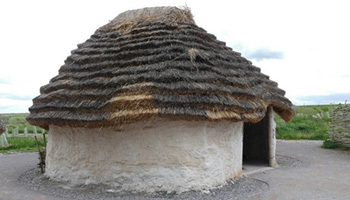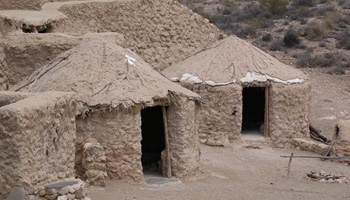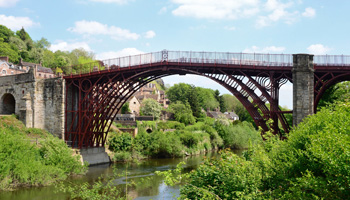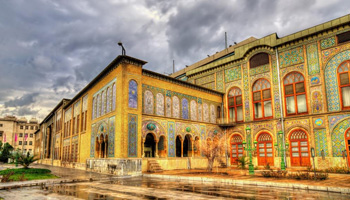You have no items in your shopping cart.
Post Requirement
The History of Construction is endless started thirty thousand years ago, where people used to roam from one place to another, hunting animals and looking for wild plants to eat. As they were always travelling, they did not build any shelter at the beginning.
Much later on, few thousand years pass by, the early humans began to put up shelters to protect them from harsh climates made by animal skin, leaves and branches that were perishable. That's how humankind started finding ways of building shelters that were larger, stronger and comfortable.
The history of architecture and construction is as old as human history. So, let's discuss on few turning points to understand the evolution of architecture.
Stone Age Construction
• Neolithic, also known as the Old Stone Age period, from 9000 BC to 5000 BC.
• It was the last period of age before the use of woodwork in buildings.
• The tools used were from natural materials, including bone, stone, antler, hide (animal skin), wood, grasses and animal fibre.

• Bones such as mammoth ribs, hide, stone, metal, bark, clay, lime plaster and more are used as building materials.
• A complete Neolithic village was seen at Skara Brae in Scotland, Europe.
• The first mud bricks made with hands belong to the late Stone Age period were found in Jericho.

• Neolithic architecture ranges from tents to megalith (an arrangement of large stones), temples, tombs and dwellings.
Copper Age and Bronze Age Construction
• The Copper Age is known as the early times of the Bronze Age.
• The use of Copper came into existence before 5000 BC and Bronze around 3100 BC.

• The same types of tools were used in both the ages, such as axes and chisel that are new, less brittle and more durable.
• A new tool developed in the Copper Age is the saw, which started using in rock-cut architecture.

• The Egyptians began to build stone temples with the post and lintel construction methods. Learn about: Arches and Lintels in Building Construction.
Iron Age Construction
The Iron Age emerges as the social and cultural environment moved on from a small group of Neolithic peoples of the Stone Age to much larger tribes. Learn more about Iron Age stunning examples of Construction, Architecture and Inventions here: Iron Age - The Early days of construction.
Medieval Construction
• The Middle Ages of Europeans from the 5th to 15th centuries AD is known to be the Medieval Age (from the fall of the Western Roman Empire to the Renaissance).
• It is the end of the Roman era and the beginning of the great construction projects like castles, cathedrals and fortifications.

• In Italy, the craft of brick-making had disappeared largely after 1000 AD and with it the burning of tiles.
• Brick remained the most precious material throughout the period in places like the Netherlands, Denmark, Northern Germany, and Poland.
• Walls were constructed using rubber infills with lime mortar and cut stone blocks outside of the walls.

• The pile driver was invented in this period around 1500 AD.
• The scale of fortifications and castle buildings were remarkable, and some of the outstanding examples are Chartres Cathedral, Beauvais Cathedral, King's College Chapel and Notre Dame, Paris.
Construction in the Renaissance
• The Renaissance is from the last 14th century to the 17th century, where the invention of movable type and Reformation changed the character of a building.
• The rebirth of the idea of an architect (Vitruvius) radically replaced the nature of the building design.
• The Renaissance introduced the classical style of architecture, literature and art.

• The major breakthrough is adopting technology, wherein most Western Europe, water mills were used to saw timber and convert trees into planks.
• Architects have started using ironwork in roof carpentry for straps and tension members.
• In Italy, roofing was typical with terracotta roofing tiles, whereas stone remained preferable material for prestigious buildings.
• Brunelleschi Project for the dome of Santa Maria del Fiore managed to devise a way of building a massive dome without formwork, relying only on the weight of the bricks.
Construction in the Seventeenth Century
• It is the birth of modern science that would have profound effects for centuries to come.
• The seventeenth-century structures relied strongly on experience, rules of thumb and the use of scale methods.

• Manufacturing of glass took place in this period, with the first cast plate glass being developed in France.
• Most buildings had stone ashlar surfaces covering rubber cores bind together with lime mortar.
• Many tools were made like line gauge, plum-line, the carpenter's square, the spirit level, and the drafting compass are still in regular use.

• A complex system of pulleys was used to lift the heavy loads, and long ramps were used to haul loads to the higher parts of the buildings.
Construction in the Eighteenth Century
• The Eighteenth Century is all about the Ideas that has born in the late Seventeenth Century.
• The architects and engineers became highly professionalized and started experiments in science and mathematical methods related to construction.

• Both cast iron and wrought iron is the breakthrough, where iron columns had been used in Wren's Designs for the House of Commons.
• The Iron Bridge at Coalbrookdale (1779) is the perfect notable example of iron in construction.
• Steel was used only in the manufacture of tools, as it could not be made in sufficient quantities to be used in buildings.

• Many buildings in most of Europe were built of brick, often coated in lime render, and sometimes patterned to look like stone.
• Terracotta in the form of Coade stone was used as an artificial stone in the UK.
Nineteenth-Century: The Birth of Industrial Revolution
• The Industrial Revolution was revealed in the new genera of transportation connections such as canals, railways, macadam roads.
• New construction devices introduced including, steam engines, machine tools, explosives, the circular saw and machine cut nails, and optical surveying.

• From the mid-19th century, steel was mass-produced and used in I-beams and reinforced concrete.
• Glass panes also went into mass production and became luxurious in every building construction.

• Introduction of Plumbing gave common access to drinking water and sewage collection.
• Since the 19th century, Building codes have been applied with particular reverence to fire safety.
Twentieth Century: The Second Industrial Revolution
• New Construction Technologies were introduced, including Prefabrication and Computer-Aided Design.
• While heavy equipment and power tools decreased the workforce needed, elevators and cranes made high rise buildings and skyscrapers possible.

• Started using personal protective equipment for workers such as hard hats and earmuffs in the construction.
• Megaprojects(investment exceeds US$ 1 billion) such as Brasilia in Brazil and the Million Programme in Sweden are often planned and constructed within the same project that includes whole suburbs, towns and cities, including infrastructure.
• Trade unions were formed to protect the construction worker's interests.

• In the late 20th century, energy conservation, ecology and sustainable development have become more critical issues in construction.
• By the end of the 20th century, concrete and steel construction became themselves the subject of the construction revolution.
The information given will be beneficial to understand the link between the past and the present construction methods. It is a way of associating cultural effect with architectural uniqueness. The construction industry is one of the prime reasons for the evolution of humankind. Thanks to the breakthrough of the past researchers, architects and engineers who made our lives much more comfortable.
Also, Read: Interesting Facts about Ancient Indian Architecture
Vani Paspula













